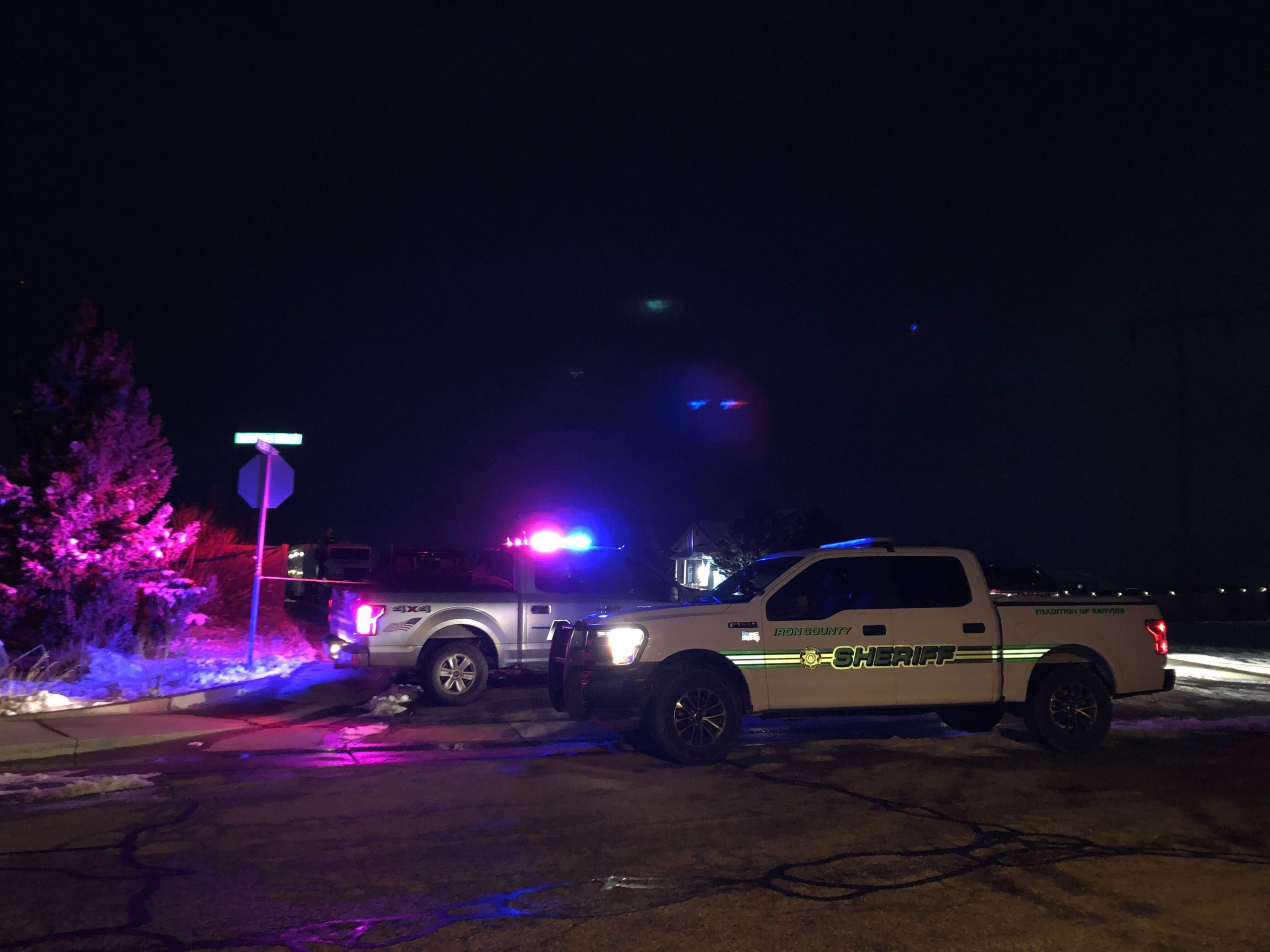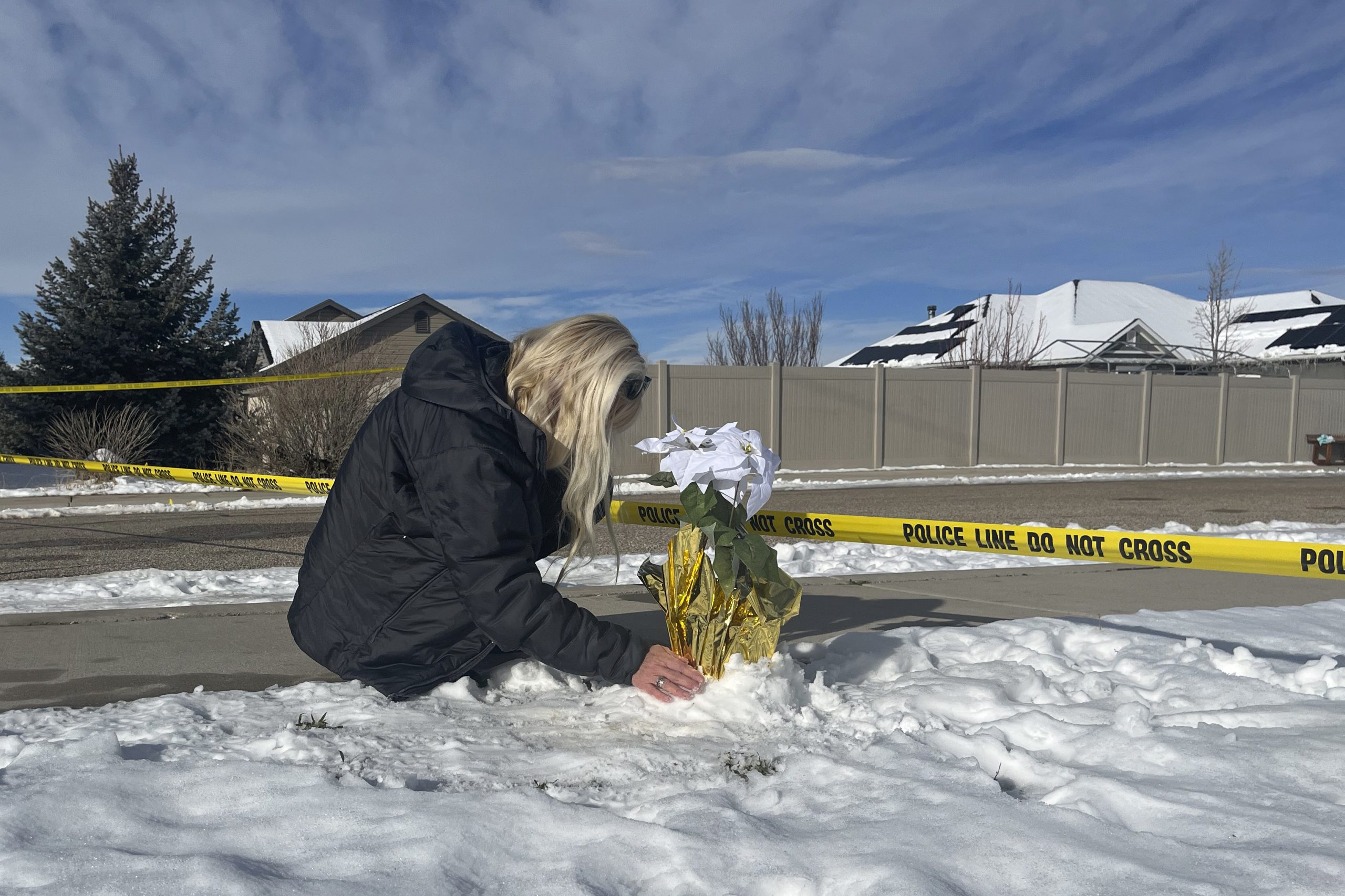
ENOCH (AP) — A Utah man who fatally shot his five children, mother-in-law and wife and then killed himself removed guns owned by himself and his wife days before the murder-suicide, leaving the family “vulnerable,” a relative said Friday.

The wife, Tausha Haight, told her extended family that her husband, Mike Haight, took the guns from the family’s home this week, just two weeks after she had filed for divorce, sister-in-law Jennie Earl told The Associated Press.
She said she did not know how Tausha Haight felt about the removal but said it “left the family vulnerable,” noting that both Tausha and her mother, Gail Earl, were trained in gun safety and personal protection. Jennie Earl’s comments came after the Earl family issued a statement lamenting the tragedy and revealing that guns had been removed.
“Protective arms were purposely removed from the home prior to the incident because all adults were properly trained to protect human life,” the Earl family said in a statement. “This is the type of loss that will continue to occur in families, communities and this nation when protective arms are no longer accessible.”
Enoch city manager Rob Dotson said local law enforcement was not involved, saying in an emailed statement that police “has never had reason and has never had to remove firearms.”

The revelation provides more insight into what happened in the days leading up to a shooting in a Southern Utah home that occurred after Tausha Haight had filed for divorce on Dec. 21 from her husband of 19 years.
The victims were found Wednesday when police did a welfare check at the residence, according to city officials in Enoch, and previously reported by St. George News.
Without knowing the details about how the shootings unfolded it is not clear whether having those firearms in the home could have helped stop the bloodshed, Jennie Earl said. However, if either Tausha Haight or Gail Earl had a chance to defend their family, they would have been able to use the guns, she said.
“They could have because they had the skills to do it,” she said.
Matt Munson, the attorney representing Michael Haight’s family, did not respond to questions about the firearms in the home but sent a statement from his clients mourning the loss of the family and sending condolences to the Earls.
The family revealed the information about the guns being removed in a statement issued Friday that also lamented the “unthinkable tragedy” and called on the media and public to refrain from using the shooting for any “advocacy of political agendas.”
“We would encourage reporting about the value of all human life, the great works of God that can render a forgiving heart, how religion can heal and enlarge our capacity for love, and a return to foundational principles of peace within our nation,” the Earl family wrote.
Enoch officials have said they are aware of the divorce filing but don’t know if that was the motive in the killings.
Enoch Police Chief Jackson Ames also said this week that officers investigated the 42-year-old man and his family a “couple of years prior,” suggesting possible earlier problems inside the household, but he would not elaborate.
Written by SAM METZ and COLLEEN SLEVIN, Associated Press. Slevin reported from Denver.
Frequency of family killings
Though shocking, family mass killings are an all-too-common tragedy across the country. They’ve happened nearly every 3.5 weeks for the last two decades on average, according to a database compiled by USA Today, The Associated Press and Northeastern University.

Enoch is one of more than 30 communities sent reeling by a family mass killing in the last two years, a list that includes communities of wealth and poverty and spares no race or class. A family mass killing – where four or more people were killed, not including the perpetrator – happened each of the last two years in places as large as Houston or as small as Casa Grande, Arizona, the database shows.
The circumstances of the killings are myriad: An argument over pandemic stimulus checks leaves four family members shot dead and two injured in Indianapolis; financial issues lead to authorities finding six children and their parents inside a house set ablaze in Oklahoma; an escalating custody battle in Ohio precedes a man and members of his family shooting the mother of his child and seven of her family members; a father loses his job, piles his wife and kids in the family station wagon and plunges it into the Detroit River.
Motives can remain speculative in family killings in which assailants take their own lives, but police often cite financial or relationship issues as the causes.
Enoch City Councilman Rob Jensen said he was well aware such tragedies happen throughout the country, yet that did little to quell the shock he felt when the killings happened in his town.
“Especially in a small town, you don’t anticipate this kind of thing. Nobody does,” Jensen said. “Everyone knows this kind of thing can happen. But everyone wants to say that it’s not them.”
Family mass killings immediately capture the attention of people in a community, but rarely garner the level of national attention received by mass killings at schools, places of worship or restaurants, said James Alan Fox, a criminologist at Northeastern University who has studied familicides and mass killings for decades.
Fox, who helped compile and maintains the database for the AP and USA Today, said that’s because it doesn’t carry the same kind of fear with the public. He noted police often issue messages saying there is no danger to the public shortly after the killings are discovered.
“It’s a nice safe community, but family massacres are independent of the crime rate in the local area,” he said. “We are talking about internal factors, and I think that’s why it’s hard for people to see themselves in these situations and why the response is to mourn instead of fear.”
Family mass killings are in fact the most common type of mass killing, making up about 45% of the 415 mass shootings since 2006, according to the database. They happen twice as frequently as mass shootings in which members of the public are killed.
Most, but not all, involve handguns, only about a third involve households with a previous occurrence of domestic violence and most of the assailants have no violent history or criminal past, Fox said.
There is no governmental agency tracking murder-suicides nationally, so a few years ago policy analysts at the Violence Policy Center – a nonprofit educational organization that conducts research and public education on violence in the U.S. – began tracking details from news accounts to produce an annual report. The latest version from 2020 looked at murder-suicides including many mass killings during the first six months of 2019.
The study found 81% of murder-suicides happened at home and 65% involved intimate partners. The study also found that among murder-suicides where more than three people aside from the assailant were killed, six of the 10 during those six months were incidents in which a person killed their children, partner and themselves.
Fox said most of the killings fall into two categories. The first is murder by proxy, in which the killer is motivated by anger or resentment and kills the children who are seen as an extension of their partner. The second is suicide by proxy motivated by despondency or depression, most often a job loss, and the assailant kills the children as an extension of themselves.
“He wants to spare them the misery of living in this awful world,” Fox said. “Over the years, there’s been an eclipse in community. There was a time decades ago if you had trouble feeding your family or if you had lost your job, neighbors would come over with casseroles and they would offer emotional support. Many people don’t know their neighbors these days.”
Written by SAM METZ and CLAUDIA LAUER Associated Press
Lauer reported from Philadelphia.
Copyright 2022 The Associated Press. All rights reserved. This material may not be published, broadcast, rewritten or redistributed.